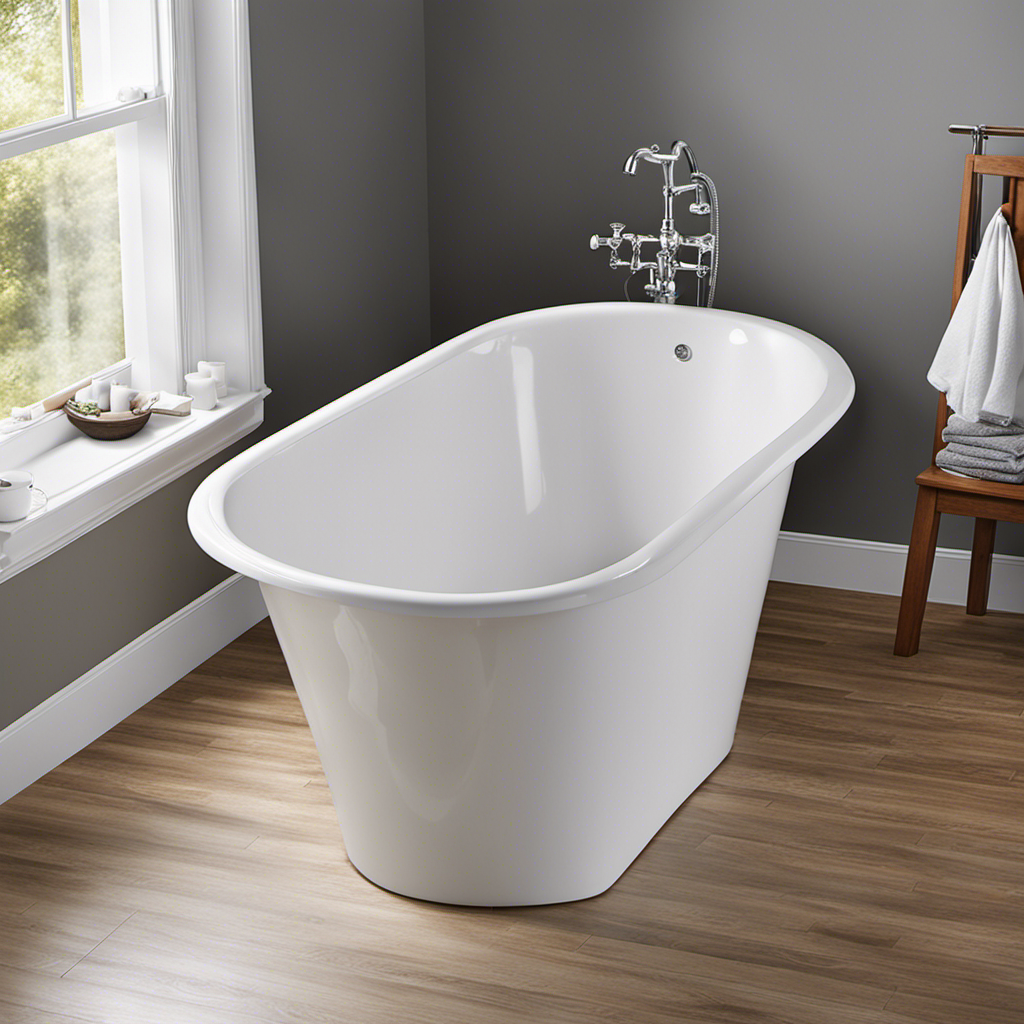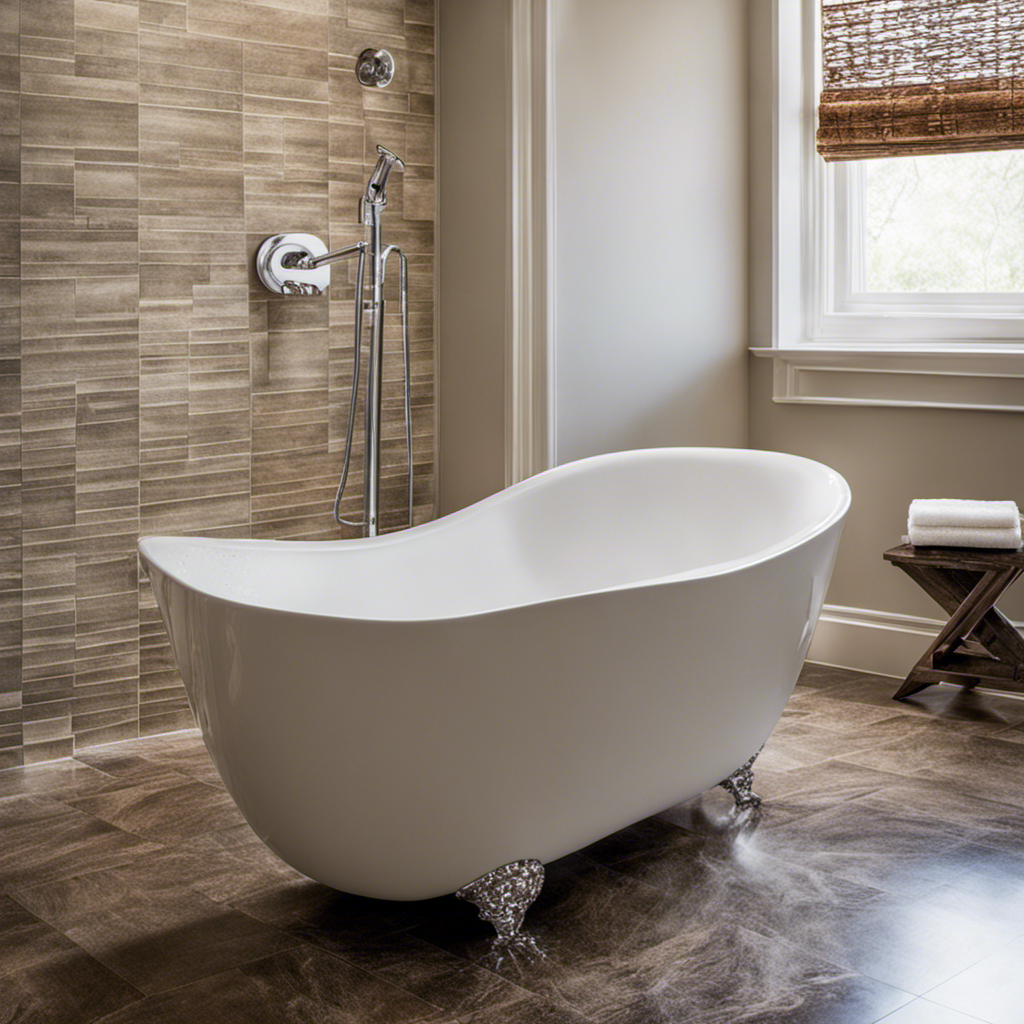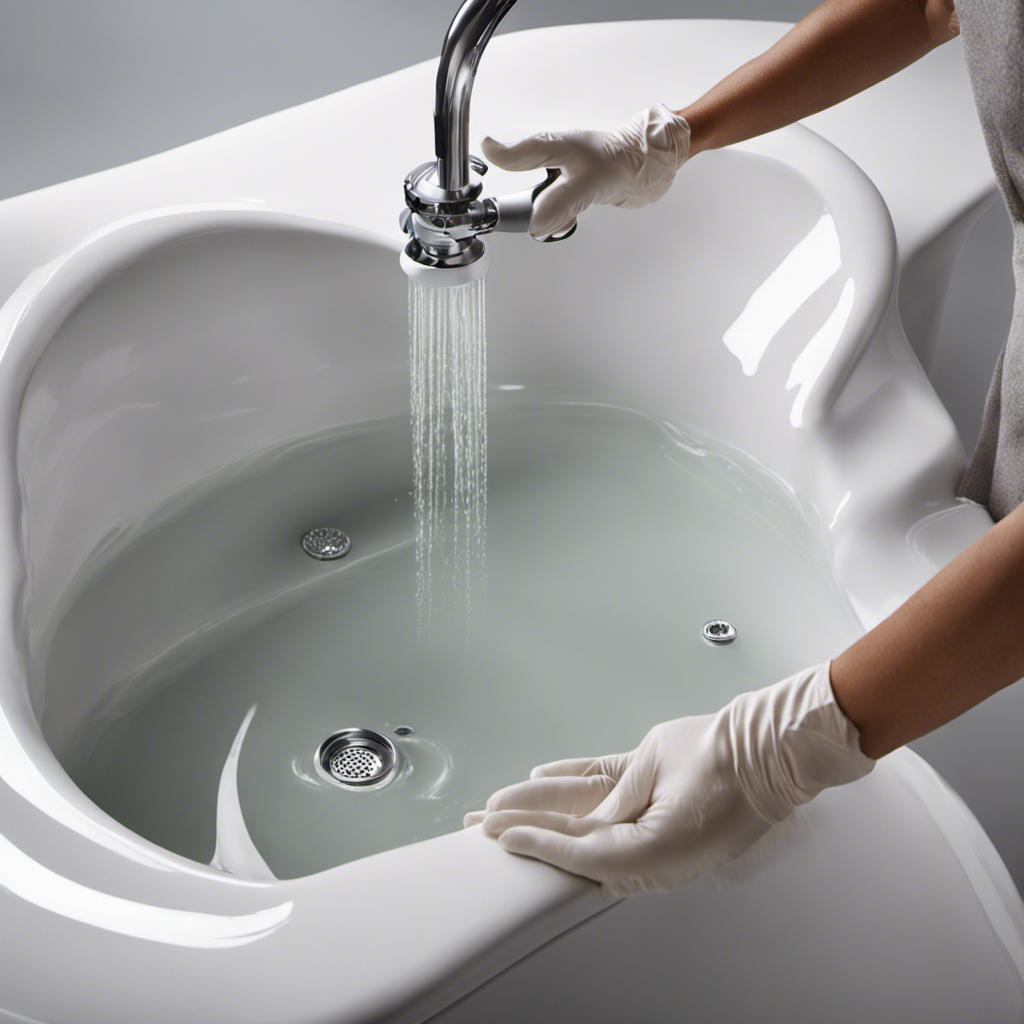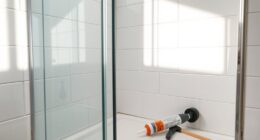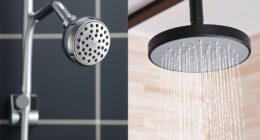As I embark on the journey of installing a new bathtub, I am filled with both excitement and determination. With the right tools and materials at my disposal, I am ready to transform my bathroom into a haven of relaxation.
In this step-by-step guide, I will share the precise and detailed process of removing the old bathtub, preparing the area for installation, and finally, installing the new bathtub.
So, let’s dive in and make this renovation project a resounding success!
Key Takeaways
- Choose the right bathtub based on size, style, material, and functionality.
- Measure the space accurately and take precise measurements to guide your selection and avoid installation issues.
- Dispose of the old bathtub properly and repair any damage in the surrounding area before installation.
- Apply a waterproofing membrane, position the tub carefully, secure it to the wall studs, and ensure it is level and straight during installation.
Gathering the Necessary Tools and Materials
You’ll need a few tools and materials in order to install your new bathtub. First, it’s important to choose the right bathtub that fits your space and meets your requirements. Consider factors like size, style, material, and functionality.
Measure the space accurately to ensure a proper fit. Start by measuring the length, width, and depth of the area where the bathtub will be installed. Take into account any obstructions such as pipes or electrical outlets. It’s also essential to measure the doorway and hallway leading to the bathroom to ensure the bathtub can be maneuvered into the space.
Use a tape measure and take precise measurements, noting them down carefully. These measurements will guide you in selecting the appropriate bathtub and help you avoid any installation issues.
Removing the Old Bathtub
Before starting the process, it’s important to remove the old bathtub carefully. This ensures a smooth transition to installing the new one. When removing the old bathtub, there are two key factors to consider: disposing of the old bathtub and repairing any damage caused by the removal process.
To dispose of the old bathtub, you can either contact your local waste management service or hire a professional junk removal company. They will safely and responsibly dispose of the old tub, adhering to environmental regulations.
After removing the old bathtub, it’s essential to inspect the surrounding area for any damage. This can include cracked tiles, water damage, or structural issues. Repairing any damage promptly will prevent further complications during the installation of the new bathtub.
In summary, removing the old bathtub involves disposing of it properly and addressing any damage caused by the removal process to ensure a successful installation of the new bathtub.
| Steps to Remove Old Bathtub | |
|---|---|
| 1. Turn off water supply | 2. Disconnect drain pipe and overflow pipe |
| 3. Remove any surrounding tiles | 4. Loosen and remove screws holding the tub |
| 5. Carefully lift and remove the old bathtub |
Preparing the Area for Installation
To prepare the area for installation, make sure to clear any debris and ensure the floor is level. This is crucial for a successful bathtub installation.
Once the area is clean and level, it’s time to focus on waterproofing techniques for the bathtub area. Start by applying a waterproofing membrane to the walls and floor surrounding the bathtub. This will prevent water leakage and protect the structural integrity of your bathroom.
Next, choose the right bathtub for your bathroom space. Consider factors such as size, style, and material. Measure the available space accurately to ensure a proper fit. Additionally, think about your personal preferences and the overall design aesthetic of your bathroom.
With proper preparation and the right bathtub, your bathroom renovation will be off to a great start.
Installing the New Bathtub
Once the area is prepped and waterproofed, it’s time to start installing the new tub. To ensure a proper seal, I first apply a layer of silicone caulking around the edges of the tub. This will prevent any leaks or water damage in the future.
Next, I carefully position the tub in its designated space, making sure it is level and straight. I use a level tool to check for any unevenness and adjust as necessary.
Once the tub is in place, I secure it to the wall studs using screws or brackets. Finally, I adjust the tub for optimal comfort by ensuring that it is at the right height and angle. This will ensure a comfortable bathing experience.
With the tub properly sealed and adjusted, it’s time to move on to the finishing touches and cleanup.
Finishing Touches and Cleanup
After all the finishing touches are completed, it’s important to clean up any debris and ensure that the area around the bathtub is tidy. This not only enhances the overall appearance of the bathroom but also helps maintain the durability of the bathtub surface.
When choosing the right bathtub finish, it is crucial to consider factors like durability, ease of cleaning, and resistance to stains. A popular option is porcelain enamel finish, which is known for its durability and resistance to scratches and stains.
To maintain a clean bathtub surface, it is advisable to regularly clean it using non-abrasive cleaners and avoid using harsh chemicals or abrasive scrubbing tools. Additionally, using a bathtub mat or liner can help prevent scratches and stains caused by heavy or sharp objects.
Frequently Asked Questions
How Do I Choose the Right Size and Style of New Bathtub for My Bathroom?
To choose the right size and style of bathtub, I consider the dimensions of my bathroom and my personal preferences. I research different materials and suppliers to find the best option for durability and design.
Can I Install a New Bathtub Myself, or Should I Hire a Professional?
I can install a new bathtub myself, but it’s important to consider the complexity of the task. Hiring a professional ensures proper installation and reduces the risk of mistakes.
What Should I Do if I Encounter Plumbing Issues While Removing the Old Bathtub?
If I encounter plumbing issues while removing the old bathtub, I would first turn off the water supply to prevent any further damage. Then, I would troubleshoot the problem using DIY solutions or call a professional plumber for assistance.
Are There Any Special Considerations or Precautions to Be Taken When Installing a Bathtub in a Second-Floor Bathroom?
Installing a bathtub on the second floor requires special considerations. Proper floor support and special tools may be needed to ensure stability and prevent any damage to the structure. Safety is key.
Are There Any Specific Building Codes or Regulations That I Need to Be Aware of When Installing a New Bathtub?
When installing a new bathtub, it is crucial to comply with building code requirements and plumbing regulations. Familiarize yourself with the specific rules and guidelines in your area to ensure a safe and proper installation.
Conclusion
In conclusion, installing a new bathtub may seem daunting, but with the right tools and materials, it can be rewarding. By following step-by-step instructions, you can successfully remove the old bathtub, prepare the area, and install the new one.
Don’t forget to add the finishing touches and clean up any mess. Taking the time to properly install your new bathtub will ensure years of comfort and relaxation. So go ahead, dive into your new bathtub and enjoy your well-deserved moments of bliss.
